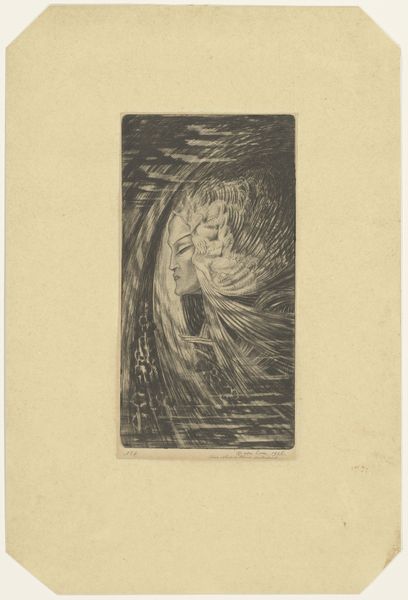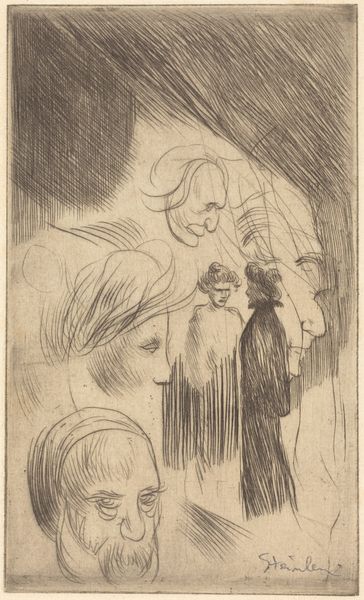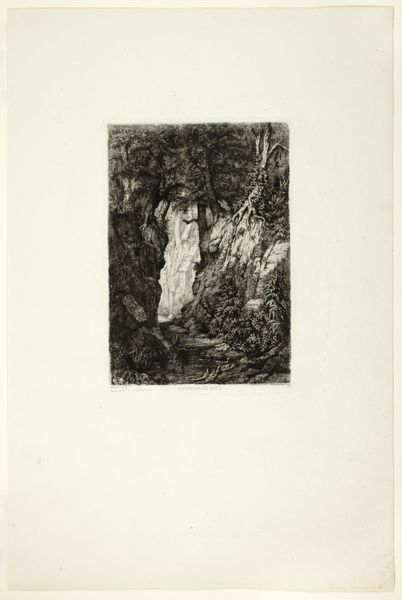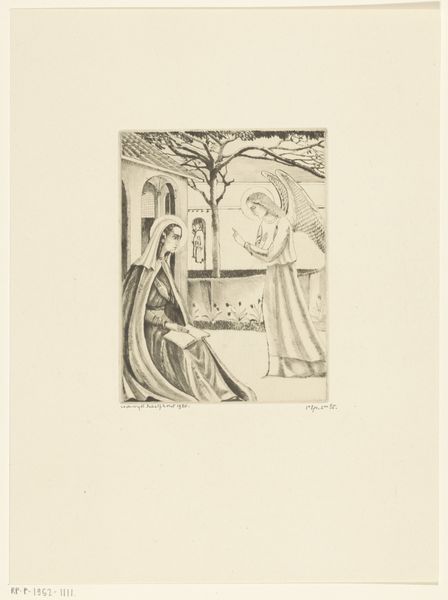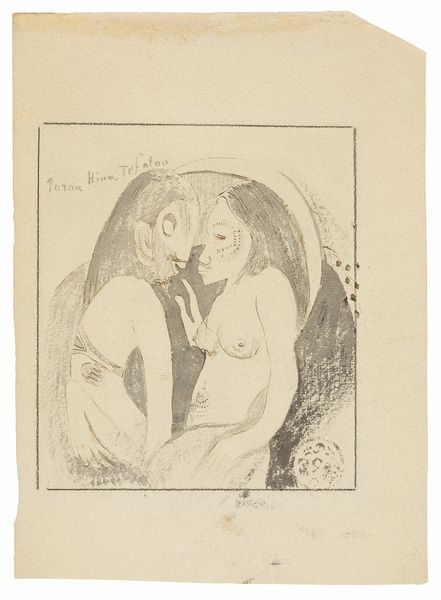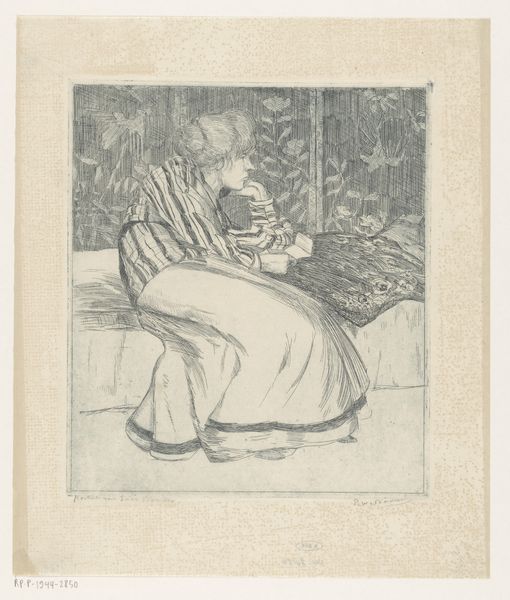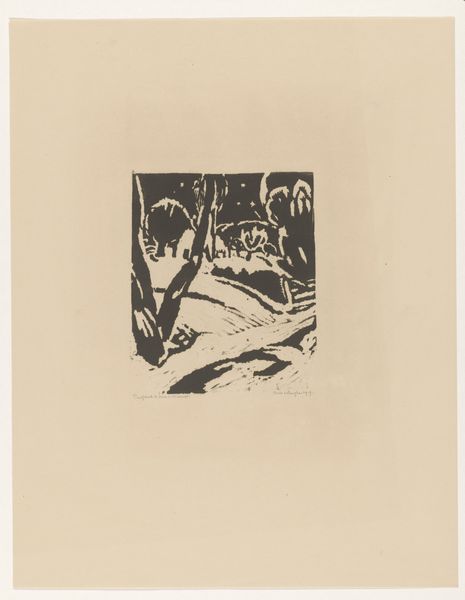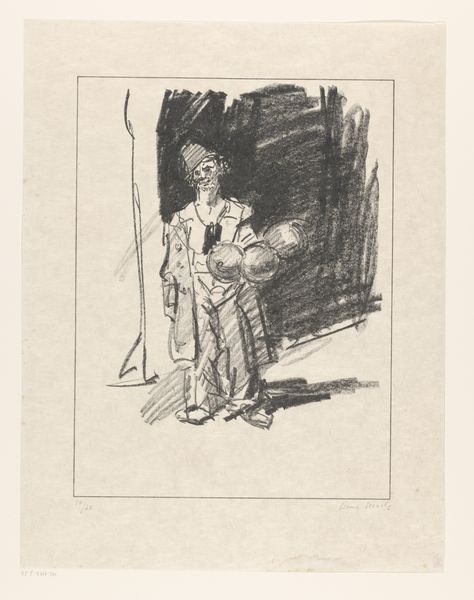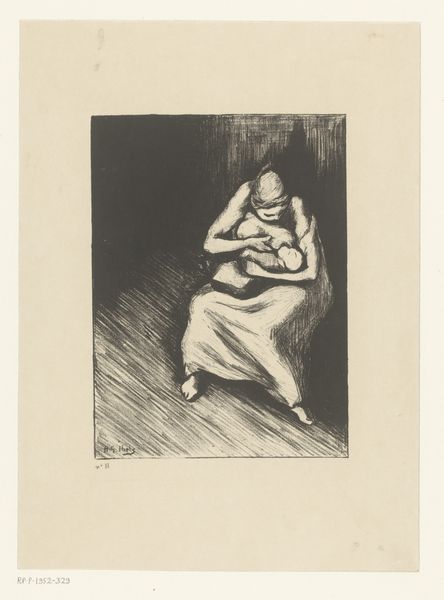
drawing, pencil
#
portrait
#
drawing
#
ink drawing
#
landscape
#
figuration
#
pencil
#
line
#
sketchbook drawing
#
post-impressionism
Copyright: Public domain
Editor: Here we have Paul Gauguin's "Ia orana Maria (Hail Mary)," created around 1895. It's a drawing using pencil and ink, and it feels so raw and intimate, like a page ripped right from his sketchbook. What strikes you most about this image? Curator: It's fascinating to consider this drawing within the context of Gauguin's broader project of engaging with and, some would say, appropriating Tahitian culture. He was deeply invested in creating an image of Tahiti that often romanticized and exoticized the local people. Note how he overlays Christian iconography onto a Tahitian scene, blending religious and cultural narratives. What do you make of the child on her shoulders and the seemingly religious setting, given that it is a Tahitian subject? Editor: I see the Virgin Mary, but transplanted. The setting doesn't read as European at all. So, is he trying to fuse Tahitian identity with Christian narrative or subjugating one with the other? Curator: Exactly! This tension is crucial. Gauguin sought a 'primitive' authenticity, but that quest was inextricably tied to colonialism's power dynamics. He imposes a European, religious lens while seemingly celebrating Tahitian culture. The public display of such artwork reinforces specific historical and power narratives. How do you think the original audiences might have perceived this? Editor: Perhaps it offered a spiritual bridge, or maybe further Othered Tahitian culture to a European gaze? Knowing what I know about art and colonization, there's an icky, possessive feeling coming from this piece, although, from a purely aesthetic view, I see the artistic allure in his visual choices. Curator: Right. We're now more attuned to these issues, the complicated power dynamics and historical narratives shaping our understanding. So, now we circle back: how should museums handle work like this? Can we separate aesthetic merit from historical issues of appropriation and the shaping of cultures through representation? Editor: These are questions without easy answers! Looking at this, I feel like I’m learning about both art history and the history of how images are used to manipulate entire cultures, both very different lessons learned simultaneously.
Comments
No comments
Be the first to comment and join the conversation on the ultimate creative platform.
